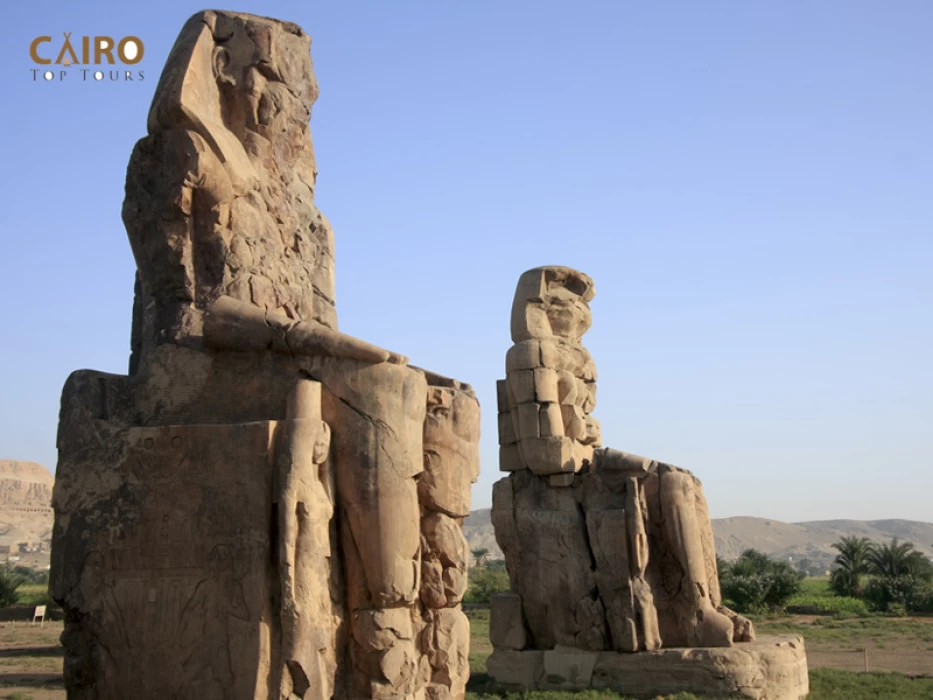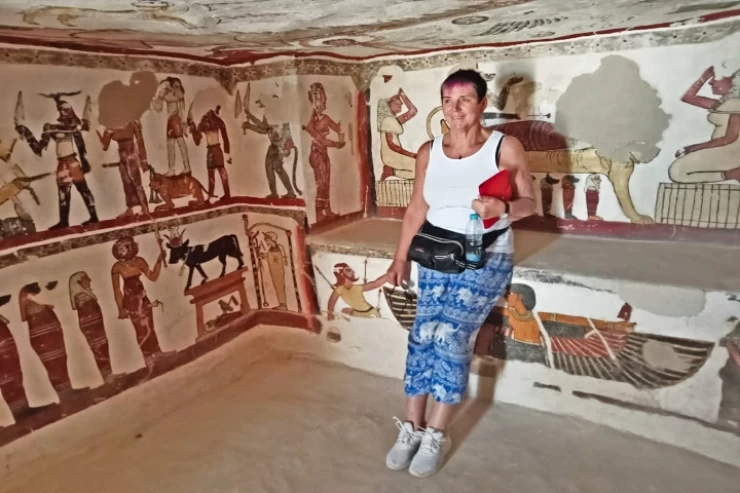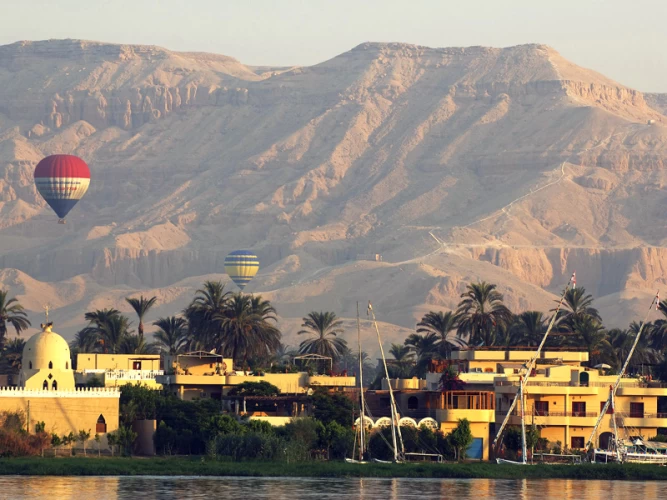
Colossi of Memnon
The Colossi of Memnon: Guardians of Ancient Thebes
There are two massive stone statues of the Pharaoh Amenhotep III, which stand at the front of the ruined Mortuary Temple of Amenhotep III, the largest temple in the Theban Necropolis.
These statues have existed since 1350 BC and have long been known to ancient Greeks and Romans and the earliest modern travellers and Egyptologists. The statues have been carved with 107 Roman inscriptions in Greek and Latin, dating from about AD 20 to 250. Many of the inscriptions on the northernmost statue refer to Memnon, a Greek mythological king that the statue was then mistaken to represent.
Description
The statues of Amenhotep III (14th century BC) are in a seated position, with his hands resting on his knees and gazing straight east inside (or east-southeast of the present compass bearing) toward the river.
Originally, the Colossi were from quartzite sandstone and originally formed a pair of statues in the great mortuary temple of Amenhotep III. Long before, it was already one of the biggest temples in Egypt, but centuries of Nile floods, earthquakes, and human deeds have destroyed most of it. But these statues have withstood the test of time and still stand as sentinels at the entrance to the lost temple.
Tradition holds that the stones are too heavy to have been raised on the Nile. The blocks used later by Roman engineers for rebuilding the northern colossus are thought to have come from Edfu (north of Aswan). The platforms on which they stand are about 4 m (13 ft) high, so that in total the colossi measure about 18 m (60 ft) and weigh probably around 720 tons each. Between the two figures, there is a distance of about 15 m (50 ft). They are of such size that even from a distance of more than 10 miles, they can still be seen. In their size, they stood as the gatekeepers of the mortuary temple of Amenhotep III. Immortalization of the self through statuary was very prevalent during the time of Amenhotep III. His statuary representation was more than the king of kings, and in inscriptions, he sought to have such an idea supported. He was called the "good god" in most of his titles. As Bickel put it, both colossi had heights accessible to the surrounding public as a method by which all could worship Amenhotep III himself and the gods at his temple.
Roman era inscriptions
In the Greco-Roman period, the northern statue became famous for producing a mysterious sound at dawn.
The cause of this phenomenon was the expansion of the stone as it absorbed the morning sunlight. Hence, the statue became associated with Memnon, a hero in Greek mythology who figured in the Trojan War. The legend stated that the statue "sang" to his mother, Eos, the goddess of dawn, to greet her. However, this was disrupted by Roman Emperor Septimius Severus, who later restored the statue. There are 107 inscriptions from the Roman period and in the languages of Greek and Latin that date between 20 and 250 CE; because of these inscriptions, modern travellers have been able to link these statues to classical Greek and Latin literature.
Several of the inscriptions refer to sounds emitted by the statues, the most famous being poetry by Julia Balbilla recording multiple visits during November 130 CE in a party that included the Emperor Hadrian and his wife, Vibia Sabina. Of the 107 Roman-era inscriptions, 61 are written in Greek, 45 are written in Latin, and one bilingual text is written.
Historical and Cultural Significance
The Colossi of Memnon remain an essential landmark in Egyptian heritage, drawing visitors from around the world. Ongoing archaeological work continues to uncover remnants of Amenhotep III’s temple complex, shedding light on the scale and magnificence of his reign. Today, the statues symbolize the grandeur of Thebes and serve as a bridge between ancient Egyptian and Greco-Roman cultures.


















